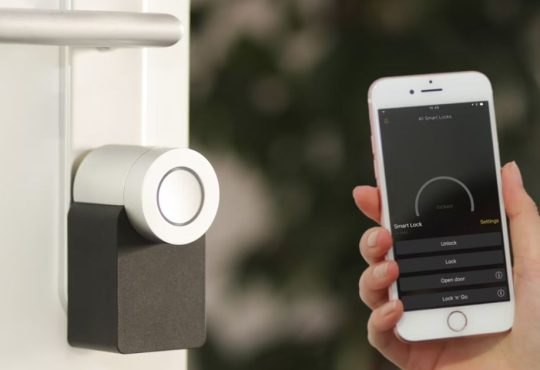The allure of minimalism has captivated many homeowners seeking peace and tranquility in their living spaces. But what exactly is minimalism? At its core, minimalism simplifies your life by eliminating the unnecessary and embracing the essential. It’s a design philosophy encourages you to create a minimalist home that reflects your values and priorities rather than a collection of items that weigh you down.
Contrary to the common misconception, minimalism is not about deprivation or living in empty rooms. Instead, it’s about intentionality and purpose, ensuring that every piece in your home serves a function or brings you joy. Embracing a minimalist approach allows you to cultivate a tidy space that enhances mental clarity and overall well-being. In this blog, we’ll explore practical strategies for decluttering, designing a minimalist aesthetic, and maintaining a minimalist lifestyle.
Decluttering and Simplifying Your Home
Decluttering Strategies
1. The One-Year Rule
The one-year rule is a simple yet effective way to begin your minimalist journey. It encourages you to assess items in your home and let go of those you haven’t used in the past year. This method promotes mindful decision-making and helps you maintain a clutter-free space. For example, consider whether each item still serves a purpose or holds sentimental value when organizing your wardrobe. Creating a curated collection that reflects your style and lifestyle can be freeing and empowering.
2. The “Does It Spark Joy?” Method
Marie Kondo inspires this popular method, which prompts you to hold each item and reflect, “Does it bring me joy?” If it doesn’t, it’s time to part with it. This approach transforms decluttering into a positive experience, allowing you to focus on the items that genuinely resonate with you and enhance your living environment. Imagine going through your books. As you pick up each one, please take a moment to recall the joy it brought you. Joy is essential—if an item doesn’t bring you happiness or serve a function, This process declutters your space and creates opportunities for others to find joy in your previously loved items.
3. Categorizing Items
To streamline your decluttering process, sort your belongings by category—clothing, kitchenware, books, etc. This method can help you identify duplicates or items you may have forgotten. By visualizing everything in one category, you can make more informed decisions about what to keep and discard. For example, when decluttering your kitchen, gather all your utensils in one spot. You might be surprised to find five spatulas or multiple measuring cups. By categorizing items, you can easily see what you have and determine what’s necessary, paving the way for a more organized kitchen.
Simplifying Routines
To further embrace minimalism, consider simplifying your daily routines.
1. Streamline Household Chores
Evaluate your household chores and maintenance tasks. Are there activities that take too much time without adding value to your life? Streamlining these chores can free up your schedule for more meaningful activities. For example, instead of spending hours cleaning every corner of your home, focus on high-impact areas that get the most use. Create a cleaning schedule that prioritizes essential tasks, allowing you to enjoy a tidy home without feeling overwhelmed.
2. Eliminate Unnecessary Commitments
Reflect on your home-related commitments. If certain activities drain your energy without contributing positively to your life, it might be time to say no. Prioritize what truly matters to create a more peaceful home environment. Consider hosting fewer gatherings if you find them stressful to manage. Instead, opt for intimate get-togethers with close friends or family. It simplifies your planning and allows you to cultivate deeper connections in a relaxed setting.
3. Prioritize Essential Home Maintenance
Focus on the core maintenance tasks that keep your home running smoothly. By prioritizing essential upkeep, you can prevent the buildup of clutter and maintain a harmonious living space. For instance, create a seasonal maintenance checklist to help you stay on top of tasks like changing air filters, checking smoke detectors, and cleaning gutters. This proactive approach minimizes last-minute scrambles and ensures your home remains in good condition.
Creating a Minimalist Home Aesthetic
Color Palette
Choosing the right color palette is crucial for achieving a minimalist aesthetic.
- Use a Neutral Color Palette: Choose neutral shades like whites, grays, and beiges as your foundation. These hues establish a calm background that amplifies the sense of openness. For instance, soft white walls can make a room appear more expansive and luminous, serving as an ideal backdrop for thoughtfully chosen decor. This approach lets you showcase your personality without cluttering the space.
- Add Accents of Color: While a neutral palette is critical, adding pops of color through artwork, throw pillows, or decorative items can bring personality to your space. Ensure these accents are intentional and keep the overall design manageable. For instance, consider a vibrant piece of art that draws the eye or a few colorful cushions that complement your neutral sofa. These elements can inject life into your space without detracting from the minimalist aesthetic.
- Avoid Overwhelming Patterns and Textures: Minimalism thrives on simplicity. Stick to subtle textures and avoid busy patterns that create visual chaos in your home. Instead of a loud wallpaper or overly ornate fabrics, consider using solid colors or delicate patterns that add interest without overpowering the space. It will help maintain a clean and cohesive look throughout your home.
Furniture Selection
Minimalist aesthetics heavily rely on the furniture selections you make.
- Choose Functional and Versatile Pieces: Select furniture with multiple purposes, such as a coffee table that doubles as storage. This not only minimizes clutter but also maximizes space. For instance, an ottoman that can be used as seating or a footrest and open for storage is a fantastic addition to a minimalist living room. This approach emphasizes functionality, urging you to invest in quality pieces that enhance usability.
- Opt for Clean Lines and Simple Designs: Choose furniture with simple designs and clean lines for a sleek, minimalist look. This approach creates a cohesive and harmonious environment that feels uncluttered. Consider a sleek, modern sofa with straight lines instead of an overly embellished one. This design creates a sense of calm and order in your living space.
- Avoid Excessive Ornamentation: Keep decorative elements to a minimum. Choose several statement pieces that reflect your style and enhance your overall design. For example, a large artwork or a beautifully designed floor lamp can be a focal point in a room without overwhelming it. This minimalist approach allows each item to shine while maintaining an uncluttered aesthetic.
Storage Solutions
A minimalist home requires practical storage solutions to stay organized.
- Utilize Hidden Storage Options: Invest in hidden storage furniture, such as ottomans with compartments or beds with drawers underneath. It allows you to keep items out of sight while still being accessible. For instance, a platform bed with built-in storage in your bedroom can eliminate the need for bulky dressers, creating a streamlined look. This solution maximizes your space while keeping it tidy.
- Keep Surfaces Clear: Aim to keep countertops, tables, and shelves clear of unnecessary items. A clean surface creates a sense of calm and order. To achieve this, consider adopting a “one in, one out” policy. For every new item you bring into your home, replace an old one. This practice prevents clutter from accumulating and helps maintain a serene environment.
- Use Multifunctional Furniture: Opt for multi-functional pieces, like an extendable dining table or a dual-purpose desk, to keep your space organized and clutter-free. These multifunctional items save space and enhance your home’s overall functionality, allowing you to adapt to different needs without compromising your minimalist aesthetic.
Lighting
The home atmosphere can be significantly impacted by incorporating good lighting.
- Maximize Natural Light: Use sheer or no curtains to allow natural light to flood your space. Natural light creates an open and airy feel, essential for a minimalist design. Consider arranging your furniture to maximize exposure to windows. It not only enhances the overall brightness of the room but also connects you to the outside environment, fostering a sense of tranquility.
- Incorporate Layered Lighting: Layer ambient, task, and accent lighting for a cozy and welcoming ambiance. This layered approach enhances the minimalist aesthetic without overwhelming the space. For example, a statement pendant light can be used as the primary illumination source, and table lamps can be added for task lighting in reading areas. This thoughtful layering creates depth and warmth in your home.
- Choose Simple Light Fixtures: Select light fixtures with clean lines and minimalist designs that complement your overall aesthetic. Avoid ornate chandeliers or overly complicated designs that can clutter your visual space. A simple pendant light or a sleek floor lamp can make a bold statement while adhering to the minimalist design philosophy. These choices enhance your space without distracting from the overall design.
Maintaining a Minimalist Lifestyle
Daily Habits
Incorporating daily habits into your routine can help sustain your minimalist lifestyle.
- Practice Mindful Consumption: Before purchasing, ask yourself if the item aligns with your minimalist values and if it will add value to your life. This mindful approach can prevent unnecessary clutter from entering your home. For instance, when considering a new piece of clothing, evaluate whether it fills a gap in your wardrobe or is simply a whim. By cultivating this awareness, you can make informed decisions that support your minimalist journey.
- Adopt a Decluttering Routine: Set a monthly time to reevaluate your belongings. This regular decluttering habit will help prevent clutter from accumulating and keep your space organized.
- Create a simple checklist to guide your decluttering sessions. For example, designate one weekend a month to tackle a specific area of your home, ensuring you stay on track and maintain your minimalist aesthetic.
- Embrace Quality Over Quantity: Focus on investing in high-quality items that will last longer and serve you better. This mindset shift promotes a more sustainable approach to consumption. For example, consider investing in one high-quality piece that meets your needs instead of buying multiple cheap items that may break or wear out quickly. This will not only reduce clutter but also enhance your living experience.
Reflecting on Your Minimalist Journey
To maintain a minimalist lifestyle, regularly reflect on your journey.
- Journal Your Progress: Keep a journal to document your decluttering and minimalist efforts. Write down your thoughts, challenges, and successes to help you stay motivated. For instance, note how you feel after decluttering a particular area or the positive changes you’ve experienced since adopting a minimalist mindset. This reflection will reinforce your commitment to the lifestyle and inspire continued growth.
- Seek Community Support: Connect with others who share your minimalist values. Join online forums, social media groups, or local meetups to exchange ideas, challenges, and successes. Engaging with a supportive community can provide motivation and encouragement as you navigate your minimalist journey. Sharing your experiences can also inspire others to embrace minimalism in their own lives.
- Celebrate Milestones: Acknowledge your achievements along the way. Celebrate your progress if you complete a major decluttering project or successfully maintain a clutter-free space for a certain period. Reward yourself with a small treat or engage in a fun activity that brings you joy. Celebrating these milestones reinforces your commitment to a minimalist lifestyle and encourages you to continue.
Embrace Minimalism for a Peaceful, Purposeful Life
Embarking on a minimalist journey is a profoundly personal experience that invites you to reflect on your values and priorities. By decluttering your space, designing a serene aesthetic, and adopting mindful habits, you can cultivate a home that nurtures your well-being and fosters a sense of peace.
As you embrace minimalism, remember that it’s not about depriving yourself of joy but rather about creating a life filled with intentional choices. Every item you release makes room for clarity, freedom, and connection to what truly matters. So, take a deep breath, start small, and let the transformative power of minimalism guide you to a clutter-free and fulfilling life.





